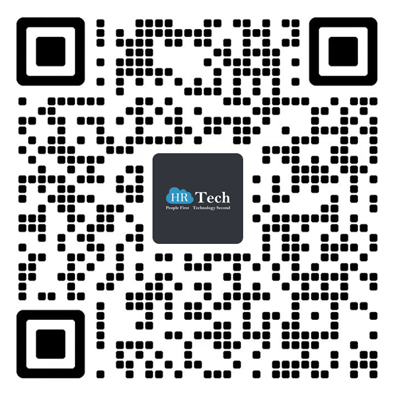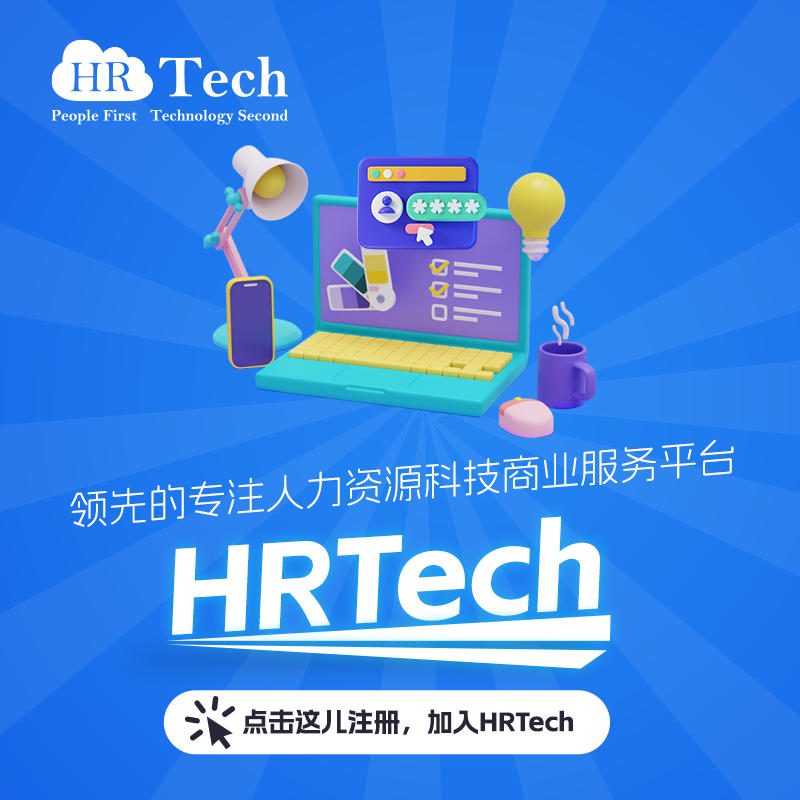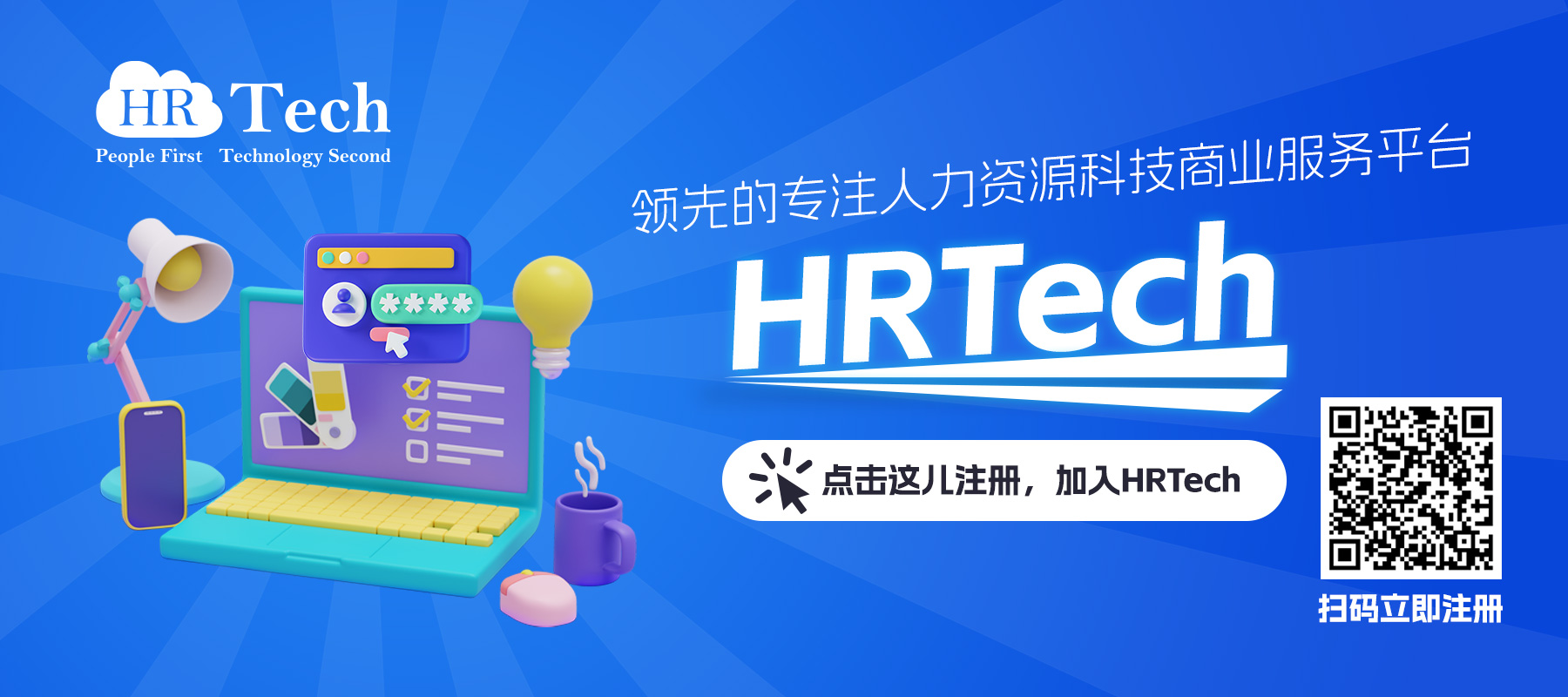-
 资讯
资讯
【美国】人力资源即服务平台DianaHR获得370万美元种子轮融资,为中小企业提供人力资源服务
首家为中小企业提供人工智能驱动的人力资源即服务平台DianaHR宣布完成370万美元种子轮融资,本轮融资由SNR Ventures领投,General Catalyst、Y Combinator以及Mercury、Twitch和Dropbox等独角兽企业创始人参与投资。公司将利用这笔资金扩充工程和运营团队,以加速产品路线图推进、提升服务承载能力,并满足候补名单中更多客户的需求。自今年初推出产品以来,DianaHR的季度营收实现翻倍增长。
SNR Ventures创始人凯文·马哈菲表示:“DianaHR的主要竞争对手是美国54,000家人力资源咨询公司,它们与薪资软件共同占据着1000亿美元的市场规模。” “该领域如同优步出现前的出租车行业——亟待颠覆。DianaHR的人力资源即服务平台能以远低于咨询公司的成本,提供更快速精准的服务。这支团队正是点燃人力资源领域人工智能革命的火种,我们很荣幸能参与其中。”
DianaHR创始人乌佩卡·比指出,企业主渴望拓展业务并控制运营成本,而非耗费精力处理人事薪酬事务。DianaHR正是为此而生。这位前Gusto HR工程主管发现,众多中小企业主每周仍需投入15小时以上处理人事事务,而专业人力资源顾问(而非技术支持人员或聊天机器人)才是更合适的解决方案。“我深知人工智能能为每家小企业配备专属人力资源团队,因此打造了DianaHR平台——它能与Gusto及其他专业人力资源软件无缝集成。”比解释道,该平台作为独立层级设计,不依赖特定薪资系统,使中小企业无需更换现有软件和流程。
DianaHR的专有平台采用多智能体协同架构,能自动化处理通常困扰中小企业主的高耗时低价值后台事务,从而节省60%以上的时间成本。企业主无需组建人力资源团队,即可依靠DianaHR承担大部分繁重工作。每位客户均配备专属DianaHR顾问,负责协调服务并提供专业支持——但多数功能已通过DianaHR人工智能平台实现全自动化。
新客户注册时将获得专属顾问,作为主要对接人通过邮件和Slack处理需求与咨询。平台仅根据邮件和Slack请求自动处理多数任务。专员通过DianaHR平台解答疑问并协助完成复杂操作,客户无需学习新软件界面,实现完全无缝衔接。
DianaHR兼容ADP、Gusto、Rippling、Warp及Every.io等主流HR工具,客户可保留现有软件系统。
“多数人力资源咨询公司的客户满意度极低——20-40%是常态——而DianaHR的净推荐值(NPS)高达90%以上,至今零客户流失,”Bee表示,“我们正在证明'人工介入式人工智能'在人力资源领域具有卓越优势——这正是人力资源的未来。”
关于DianaHR
DianaHR为140万家拥有至少10名员工的中小企业提供首款人工智能驱动的人力资源即服务平台。当前中小企业主每周需耗费15小时以上处理后台人事事务,包括软件管理、薪资核算、合规审查、福利咨询、员工入职、保险办理及401k计划等。DianaHR采用人机协同AI技术,可与现有HR工具无缝集成,通过AI自动化与专业操作团队的协同处理,全面解决上述难题。该方案既能替代人力资源团队和高价顾问,又能提升响应速度与准确性。
-
 资讯
资讯
【维尔纽斯】员工福利平台MELP获得125万欧元融资,用于在英国扩展员工福利平台
员工福利平台MELP在由Coinvest Capital领投、天使投资人跟投的新一轮融资中筹集了125万欧元。这笔新资金将用于巩固公司在英国市场的地位。
该平台于2022年上线,通过个性化福利、内部沟通、表彰计划及多方供应商折扣等服务帮助雇主提升员工参与度。其名称MELP代表医疗服务、员工福利、生活方式与长寿保障及安全防护四大核心功能。平台已通过ISO 27001信息安全认证。
自2024年1月上一轮融资以来,MELP实现显著扩张: 用户基数从1.6万增长至6.8万,销售额增长超过2.5倍。2025年,该公司与LTG集团旗下企业签署协议,为逾5000名员工提供服务,并与Affidea集团达成覆盖15个欧洲国家的国际合作协议,以16种语言为超过1万名员工提供服务。
MELP联合创始人罗伯特拉斯·萨尔蒂斯表示:“公司不仅在地域上扩张,更通过人工智能技术成功提升功能性并聚焦创新——从任务自动化到员工互动型内联网。” “MELP电子商店服务正快速增长,该平台允许员工自主选择额外福利——我们预计2025年员工福利市场销售额将达300万欧元。”
萨尔蒂斯补充道,前期投资助力公司在波罗的海国家实现扩张并试水其他欧洲市场。他指出新融资主要将用于拓展英国业务,重点服务雇佣一线员工的中型企业。
"有些团队固守既定战略目标,另一些则能随环境变化灵活调整目标。我认为MELP团队属于后者,其精准及时的响应能力正是公司实现惊人增长的关键因素。创始团队的经验与团队的专业能力,使他们能够精准捕捉周边市场的机遇,避免在陌生领域浪费资源。他们还洞察到人工智能蕴含的潜力,如今MELP已积累宝贵经验并配备合适工具,蓄势待发迎接下一次飞跃。我们祝愿他们持续成功。"Coinvest Capital董事总经理Viktorija Trimbel如是说。
Coinvest Capital在本轮融资中注资80万欧元。该基金由立陶宛国家发展银行ILTE设立,专注投资能为立陶宛市场创造价值的欧洲潜力初创企业。自成立以来,Coinvest Capital及其合作伙伴已投资49家初创企业并成功退出6家,累计投放风险投资超过5700万欧元。
MELP目前已被Ignitis集团、Nortal、IKI Lietuva(Rewe集团旗下)、Atea Baltic、沃尔沃立陶宛、City Service以及维尔纽斯市政府等企业采用。
关于MELP
MELP 提供简单易用、价格合理的数字工具,用于个性化员工福利,从而满足每个人的期望。无论是大型企业还是小型企业,我们都能帮助他们吸引新人才、留住优秀员工,并保持员工的忠诚度和参与度!
-
 资讯
资讯
【伦敦】AI临床人才平台Tern Group获得2000万欧元A轮融资,以应对医疗人才短缺问题
总部位于伦敦的临床人工智能人才平台TERN集团宣布完成2000万欧元A轮融资,该平台致力于发掘、招募并调配顶尖医疗人才,此轮融资使其总融资额达到2820万欧元。
本轮融资由Notion Capital领投,RTP Global、LocalGlobe(英国)、EQ2 Ventures、Leo Capita、PreSight Capital、大卫·普赖尔勋爵(前英国国民医疗服务体系主席兼副卫生大臣)、安盛健康首席执行官以及Tom Stafford(DST Global联合创始人)共同参与。
TERN集团创始人兼首席执行官Avinav Nigam表示: "每家接触的信托机构都面临相同困境:他们急需合格人员,却不能以患者安全或合规为代价。我们的平台在保障效率的同时杜绝妥协,在维持可预测性的同时避免成本膨胀,更在临时工依赖已不可持续的领域实现可持续发展。
"TERN集团的使命是让每次人员配置引发连锁反应:护士准时到岗意味着病房运转顺畅,患者就能更快获得治疗。本轮融资将助力我们在英国乃至全球范围内实现大规模连锁反应。"
世界卫生组织预测,到2030年全球医疗行业将面临1800万从业人员缺口。这导致医院和护理机构人手紧缺,被迫依赖高昂的临时工来填补预算缺口,却无法解决长期人才短缺问题——仅英国国民医疗服务体系(NHS)在临时工上的支出就超过100亿英镑。
全球医疗体系陷入相同困境:行业需求持续攀升,合格医疗人才却无处可寻。加之国际招聘流程冗长且官僚主义严重。
TERN集团致力于通过规模化解决方案打破僵局,将人工智能驱动的工作流程与人工支持相结合,提供培训、搬迁及安置服务。
Notion Capital合伙人伊塔索·德尔·帕拉西奥指出:“TERN集团正攻克医疗行业最紧迫的结构性难题——实现经济实惠、可靠且可持续的招聘。通过将合规性与人工智能驱动的效率相结合,他们证明了医疗人才输送不必缓慢零散,完全可以成为可预测的基础设施。正因如此,他们已逐步成为英国及全球医疗体系值得信赖的合作伙伴。”
该平台据称可实现:
招聘周期缩短60%(将数月流程压缩至数周)
相较临时工密集型模式节省3倍成本
通过精准匹配人才供给与临床需求提升15-20%生产力
优化候选人体验,实现96%留任率
AI工作流可无缝集成至单一合规企业平台
TERN集团已拥有100余家全球医疗客户,包括18家英国NHS信托机构(涵盖英国五大信托机构中的两家)。过去一年公司核心市场从1个扩展至6个,业务现覆盖德国、英国、阿联酋、沙特、日本及美国。
来自13个国家的65万余名专业人士已注册使用该平台,获取透明信息、技能提升机会及知名雇主的直接职位。
普利茅斯大学医院NHS信托基金首席执行官马克·哈克特表示:“TERN集团通过提供合规且可预测的国际医生输送渠道,帮助我们缓解关键人力短缺问题。其平台为传统上缓慢分散的流程注入了亟需的效率与结构化管理。”
凭借新一轮融资,TERN集团将扩大英国业务版图,深化与NHS信托机构及医疗集团的合作,并加速推进临床人工智能人才平台的开发,涵盖合规自动化、人力规划及系统集成等功能。
公司还将持续投入国际人才培养——涵盖临床技能、语言能力和文化适应性,确保专业人才不仅能顺利履职,更能实现长期发展。
关于TERN
成立于2023年的TERN集团是构建临床人工智能劳动力系统的全球人才流动平台。业务覆盖印度、德国、英国、海湾合作委员会国家及日本,致力于帮助医疗机构实现更快速、更合规、更规模化的招聘,同时确保专业人士以尊严与自信开启全球职业生涯。
-
 资讯
资讯
临时医疗人员派遣解决方案供应商VeloSource获得一笔融资,以更好地服务全美医疗保健机构
洛杉矶私募股权公司Interlock Equity(“Interlock”)宣布对临时医疗人员派遣解决方案领先供应商VeloSource进行战略性增长投资。此次合作将加速VeloSource的业务扩张,强化其专业领域专长,并升级技术平台,以更好地服务全美医疗保健机构。
VeloSource公司由杰夫·沙尔与帕特里克·多诺万于2015年创立,VeloSource秉持清晰愿景:为医疗机构对接顶尖医师及高级执业人员,确保卓越的患者护理。目前公司已与全美多家医院、医疗体系、高校及医师团体建立合作,提供满足关键人力需求的顶级人才配置方案。
“杰夫与我无比激动能携手Interlock Equity,为医疗行业带来以成果为导向的临时执业医师服务。Interlock提供的关键战略支持与客户关系协同效应,将助力我们在竞争格局中实现快速增长。随着我转任董事会职务,我对杰夫及团队在临时执业医师解决方案领域创造卓越成就充满信心。”VeloSource创始人/合伙人Patrick Donovan表示。
VeloSource首席执行官兼创始人杰夫·沙尔表示:“与Interlock的合作开启了公司激动人心的新篇章。他们对创新和长期发展的承诺与我们的价值观高度契合,期待共同创造辉煌。此次合作将为团队成员带来更多机遇——我们将通过培育独特企业文化、以客户为中心拓展临时医疗解决方案,实现业务的持续增长。”
“VeloSource正致力于解决医疗领域最紧迫的挑战之一——通过高资质临时执业人员缓解持续存在的医疗人员短缺问题,”Interlock董事总经理罗布·齐林斯基指出,“该公司具备独特优势可把握行业强劲发展机遇,我们很高兴能在支持杰夫、帕特里克及整个VeloSource团队迈入新发展阶段的同时,延续吸引顶尖人才加入的企业文化。”
Interlock董事总经理Mike Orend补充道:“Jeff和Patrick打造了一家卓越的企业,已成为临时医疗人员派遣行业的首选雇主。他们与客户建立的信任关系、对卓越的追求以及以人为本的企业文化,正是我们寻求合作伙伴的核心特质。”
关于VeloSource
VeloSource获《人力派遣行业分析师》评为2025年“最佳雇主人力派遣机构”,是专注临时医疗人员服务的顶尖医疗人力派遣与招聘机构。依托覆盖全美的优质医疗服务提供者网络,VeloSource提供定制化人力解决方案,助力医疗机构维持医疗服务连续性并提升患者治疗效果。
关于Interlock Equity
Interlock Equity成立于2021年,总部位于洛杉矶,是一家专注于与知识型、人才驱动型企业管理团队合作的私募股权公司。Interlock投资北美中低端市场企业,重点布局关键任务型B2B及医疗服务领域。通过提供战略资本、深厚的行业专业知识及协作式投资模式,Interlock助力创始人及管理团队实现变革性增长。
-
 资讯
资讯
【美国】语音人工智能平台Mappa获得340万美元融资,优化招聘决策
Mappa——这家通过行为分析重塑企业人才评估方式的语音人工智能平台宣布,其种子轮融资超额认购,共筹集340万美元。本轮融资由德雷珀联合公司领投,塞拉克风险投资、河畔资本、雪尔风险投资、海草资本、天使战队(Hustle Fund)、格朗风险投资、SoGal风险投资、The Pitch以及墨西哥天使中心共同参与。
Mappa帮助企业识别候选人的文化契合度、沟通风格和决策方式——无需依赖主观判断或简历偏见。该平台能在60秒内分析30余项语音生物特征——包括语速、停顿频率及特定动词名词的使用情况——实时预测候选人传达意图、承担责任的方式,以及应对高压冲突等关键情境的反应模式。通过研究行动导向动词或回避性语言等语言模式,Mappa 帮助招聘团队不仅理解候选人的言辞,更能洞察其关键时刻的表现。
“我们正迈入行为可量化的新纪元,这将颠覆传统招聘认知,”Mappa创始人兼CEO莎拉·卢塞纳表示,"传统人才评估方式存在偏见,往往忽视人们在关键时刻的真实表现。Mappa让隐性信号显性化,将人类行为转化为现代决策中最宝贵的数据资产。本轮融资将加速这一变革——通过将技术直接嵌入客户招聘系统,使其关键人事决策更高效精准。"
Mappa的核心技术优势包括:
* 60秒内完成行为解码:分析逾10万个语音数据点,评估候选人应对压力、反馈与模糊情境的能力。
* 专有12层AI架构,融合语音生物标记与公开数据构建多维候选人画像。
* 行动导向语言分析,通过动词使用频率、名词密度及第一人称标记评估主动性、责任感与认知专注度。
* 双向分析——同步评估候选人与企业,确保深度文化与行为契合。
“简历展示的是个人过往成就的亮点,而Mappa AI则揭示其在现实世界中的表现潜力,”德雷珀联合创始人蒂姆·德雷珀表示,"通过将实时行为数据转化为招聘信号,Mappa为企业提供了更智能的人才甄选方式,助力打造更强大的团队并发掘新一代领导者。我们很高兴支持这样一支团队——他们不仅在革新人力资源管理,更在重塑全球最关键的人事决策模式。"
Mappa已为多家领先企业提供大规模招聘决策支持,助力其降低人才流失率、加速决策进程、打造高效协作团队。其API优先的设计理念可无缝集成现有系统,使人才主管能在招聘全流程嵌入深度行为智能分析,且不增加额外操作负担。
“Mappa让我们清晰洞察候选人应对压力、承担责任及跨部门协作的能力——这些特质在我们快节奏的工作环境中至关重要,”领先金融服务与金融科技创新机构K2创始人兼CEO Jacky Korn表示,“Mappa匹配的候选人完美契合岗位需求!我们常在面试当天就发出录用通知。如今它已成为我们招聘体系的核心环节。” 这些洞察既快速精准,又与我们构建高效团队的规模化策略高度契合。"
自2022年推出以来,Mappa已在各行业实现快速普及:
* 通过强化行为匹配降低离职率,每名雇员节省成本超3万美元。
* 借助数据驱动的快速决策,每个岗位节省300+小时。
* 完整行为解码与匹配度评分耗时<1分钟。
* 签约企业超100家,覆盖美国及拉丁美洲大型企业.
* 实现300万美元年化营收,源于招聘团队对深度洞察与高效成果的持续需求。
新一轮融资将用于:扩展企业级产品规模,扩充技术与市场团队,深化与Airtable、Notion、Excel等核心招聘系统及平台的API集成。
-
 资讯
资讯
【美国】绩效管理平台Klaar获得500万美元A轮融资,助力绩效管理
旧金山——由人力资源领袖打造、专为人力资源领袖服务的绩效管理平台Klaar宣布正式登陆美国市场,并完成由Prime Venture Partners领投的500万美元A轮融资。本轮融资将助力Klaar推进美国市场拓展计划、新客户接入及持续规模扩张,彰显其在全球市场的卓越业绩,并践行革新美国绩效管理领域的愿景。
绩效管理长期以来令HR高管与员工倍感困扰。事实上,98%的首席人力资源官表示对现有绩效管理系统的运作方式不满,认为现有工具不够直观或影响力不足。员工普遍持相同观点:仅五分之一受访者认为绩效评估公平或能激发更好表现。Klaar以直观的人工智能平台取代过时系统,实现绩效管理的预测性评估,并助力构建清晰公正的反馈机制。该平台将企业目标与团队及个人紧密关联,实时锁定改进空间,提供可执行的洞察以推动业绩提升与职业发展。
Klaar提供全面的绩效管理解决方案,包括:
目标与关键结果(OKRs):确保团队聚焦关键成果,保持协同一致。
评估与一对一会议:简化持续反馈与辅导对话流程。
校准机制:通过人工智能驱动的自动化校准流程保障公平性,确保人才决策基于数据而非主观判断。
个人发展计划与能力模型:制定个性化发展计划,培育未来领导者。
问卷调查与360度评估:全面捕捉绩效表现与员工敬业度。
Klaar的AI增强工具可无缝集成至企业日常应用与工作流程,提供实时协助与洞察,大幅降低管理者和员工定制目标、追踪行业及岗位相关成果所需的时间精力。数据驱动的洞察力能消除近期偏见和主观反馈,提升团队及全公司的公平性。
“Klaar助力开展及时且富有意义的对话,帮助任何领导者有效指导员工并打造高绩效团队,”Klaar首席收入与客户体验官Lana Peters表示。这位拥有逾25年人力资源技术经验的行业资深人士指出:“Klaar管理团队深谙人力资本管理之道,能协助企业优化人才发展、培育强大文化并实现切实成果。”
“作为资深人力资源从业者,我深知绩效管理工具笨拙过时的困扰。Klaar正是为解决这些痛点而生,”联合创始人兼首席执行官Sharthok Chakraborty表示。
Klaar联合创始人兼首席运营官阿特里·罗伊补充道:“这款工具融合了深厚的人力资源专业知识与尖端技术,真正能让HR团队主动采用,使绩效管理最终成为企业的战略优势。”
Klaar已与美国多家创新企业展开合作,包括T-Mobile、Vidyard、Armstrong和Zenwork,助力其革新绩效管理模式。
Zenwork人力资源总监塞斯·吉文斯表示:“Klaar彻底改变了我们对绩效对话的认知。它帮助领导者和团队保持专注、聚焦成长,并提供清晰可行的洞察,使管理者与员工的每次对话更具价值。通过打造推动强劲业务成果的高绩效团队,它已成为Zenwork保持竞争力的关键伙伴。”
Klaar进军美国市场之际,正值混合办公与远程办公模式兴起,人力资源管理者面临着提升员工参与度、留住优质人才及提高生产力的多重压力。通过融合多年一线人力资源洞察与人工智能技术,Klaar为科技、专业服务、金融、制造等目标驱动型行业树立了绩效管理新标杆。
关于Klaar
Klaar为混合办公和远程团队提供个性化的员工绩效、学习发展、人才管理及体验平台。其产品涵盖导师指导与社交学习、归属感与包容性建设、劳动力管理以及员工参与度提升。通过聚焦未来工作中影响人才成功的关键领域,助力企业实现直接业务成果。
-
 资讯
资讯
【美国】技工招聘平台LaborUp获得580万美元A轮融资,助力美国工业劳动力发展
总部位于田纳西州纳什维尔的技工招聘应用LaborUp已完成580万美元融资,累计融资总额达774万美元。本轮种子轮融资由NVP领投,Torch Capital、Threshold、Heartland VC以及天使投资人Jeff Dean、James Slavet和Evan Moore参与投资。种子轮前融资方包括Daybreak、Westbound、Jeff Jordan、Marketplace Capital、Market Square Ventures及其他天使投资人。
本轮融资将实现构建端到端智能招聘基础设施,涵盖语音优先筛选、资质验证、工厂模型、约束感知匹配及与绩效挂钩的闭环系统。在南部及中西部地区扩充前置部署团队,筛选认证数十万机械师、焊工及技术人员,深化与职业学校及退伍军人项目的合作渠道,构建认证人才图谱。
LaborUp正致力于解决美国工业基础面临的劳动力危机。公司运用人工智能革新制造企业的招聘模式,以前所未有的速度和效率为企业匹配经过严格筛选的熟练工人。通过消除招聘流程中的阻碍,公司助力制造商填补关键岗位空缺,保障生产正常运转,并增强美国劳动力队伍的实力。
工业经济正面临危机。劳动力短缺使制造商举步维艰,他们苦于找不到所需的技术工人。到2030年,将有210万制造业岗位无人填补,导致供应链脆弱不堪,生产陷入停滞。
这不仅是经济问题,更是国家安全威胁。国防工业、关键基础设施及维系美国运转的制造企业,若缺乏可靠劳动力将无法运作。与此同时,过时昂贵的招聘模式已然失效——企业耗费数月填补岗位空缺,最终却面临高离职率与高昂延误成本。公司坚信,各地制造商与劳动者都值得拥有更优解决方案。
每个设施、工厂和车间都依赖两样东西运转:人和机器。即使拥有全球最先进的设备,若缺乏合适的操作人员,生产仍将停滞。这些人才确实存在——他们持有认证且经验丰富——却在过时的招聘平台上隐形,被中介机构冷落,困在为他们量身打造的流程中。这种困境扼杀了增长,正迅速演变为国家安全风险。
从《财富》百强企业高管到小店店主,数百次对话中反复出现相同的呼声:"我们找不到人才。只能依赖猎头公司、招聘网站和临时工。"当拥有完整人力资源团队的财富500强企业与五人小店遭遇同样困境时,问题根源显然在上游。而至今,关键岗位的填补方式依然如此,唯有从零构建全新系统才能改变现状。
为打造理想系统,公司与招聘经理面对面沟通,执行岗位需求评估,安排焊接测试,追踪推荐信,处理候选人爽约——由此摸清每个人工环节的瓶颈。基于这些实践,公司正在开发自主决策、语音优先的人工智能系统,承担繁重工作:执行结构化面试,验证技能资质,并根据决定成败的关键约束条件(如轮班节奏、通勤范围、生产线工具配置、主管管理风格)精准匹配候选人。该系统能捕捉招聘网站遗漏的车间信号——如数控程序、设备换模流程、焊接规范及公差要求——并通过考勤数据、入职90天表现及在职时长持续学习,实现匹配精度迭代提升。
公司未来规划:
• 大规模语音优先筛选,配合领域专属跟进与后续流程管理
• 技能资质验证,确保合规性与岗位适配性
• 基于真实约束条件(工具、班次、通勤、团队契合度)匹配的AI撮合系统
• 工厂模型:学习各站点招聘基因,建立绩效闭环将出勤率、入职90天表现及在职时长数据回馈系统
公司正为战斗机部件制造、铀浓缩生产线及关键基础设施维护团队加速招聘进程,释放数百万美元生产力。人员配置延误将导致进度推迟、生产线停滞,并引发造船与航空航天项目的连锁反应。大规模解决此问题已成为战略要务。本轮融资将助力公司实现更快速、更大规模的交付。
-
 资讯
资讯
赞华动态 | 贺华南大区乔迁新址,启新程、谱新篇!
2025年8月29日,吉时佳音,喜庆洋溢。赞华集团华南大区在热烈的期盼中,迎来了具有里程碑意义的乔迁盛典!这一刻,既是对过往奋斗历程的致敬,更是迈向全新未来的起点——华南大区正式落户广东省深圳市罗湖区笋岗街道宝安北路3039号深圳人才大市场五层507A,以全新的办公环境、昂扬的精神风貌,开启集团在华南区域发展的崭新篇章。
新址焕新颜:匠心营造,高效赋能
走进新办公区,开阔通透的空间布局令人耳目一新,开放式工位促进跨部门协作,让沟通更顺畅、创意更迸发;多间独立会议室配备高清投影与智能会议系统,无论是商务接洽还是内部研讨,皆可从容应对。此外,贴心的配套设置——从便捷的茶水间到专属文件存储区,无一不体现对员工关怀的细致入微,全面助力团队高效办公、专注创新,为集团持续发展注入新动能。
战略新布局:核心区位,辐射华南
华南大区新址位于深圳市罗湖区核心商圈,地理位置优越,交通网络发达,地铁、公交多条线路便捷通达,既提升了员工通勤体验,也更便于客户与合作伙伴到访交流。这一战略选址,不仅体现了赞华集团深耕华南市场的坚定决心,更彰显不断追求卓越、强化服务能力的品牌抱负。以此为基点,华南大区将进一步提升区域协同与服务能级,强化赞华在本地市场的品牌影响力与核心竞争力。
扬帆新航程:聚力前行,共绘蓝图
乔迁,是新征程的开启,更是高质量发展的新起跑线。立足新起点,赞华集团华南大区将以更饱满的激情、更专业的服务、更开放的姿态,持续拓展业务领域、优化服务体验,努力为客户提供更高效、更精准的解决方案。同时,团队将进一步加强内部建设与人才培育,深化与集团总部及各分部的协同合作,整合资源、共享机遇,实现共赢发展。
坚信在全体员工共同努力及广大客户与伙伴的支持下,华南大区定能在新的舞台上乘风破浪、再创辉煌,为赞华集团整体发展注入强劲动力,也为华南区域经济高质量发展贡献更多赞华力量!
乔迁大吉,未来可期。让我们共同祝愿赞华集团华南大区在新环境中茁壮成长,书写更加辉煌的明天!
-
 资讯
资讯
赞华动态 | 铭刻历史,共瞻盛典:赞华集团全员观看九三阅兵,凝聚爱国情怀,砥砺奋进力量!
2025年9月3日,是中国人民抗日战争暨世界反法西斯战争胜利80周年。在这个承载着厚重历史与和平愿景的日子里,赞华集团组织全体员工集中观看了于北京天安门广场举行的纪念大会暨阅兵仪式直播,共同回顾那段峥嵘岁月,感受大国崛起的磅礴气势,深刻缅怀为民族独立与世界和平奉献牺牲的英雄先烈。
共睹庄严时刻 · 激荡爱国情怀
上午9时,赞华集团总部及各分公司的会议室里,同事们早已齐聚屏幕前,满怀期待。当庄严的《义勇军进行曲》奏响,鲜艳的五星红旗冉冉升起,全体员工自发肃立,目光追随着国旗,眼中饱含着对祖国的无限崇敬与深情。
此次阅兵作为纪念活动的重要组成部分,历时约70分钟,按阅兵式、分列式依次进行。受阅部队在长安街列阵,以空中护旗梯队、徒步方队、战旗方队、装备方队、空中梯队的顺序,依次通过天安门广场。全面展现了新时代新征程人民军队的政治风貌、力量结构新布局以及现代化建设的新进展。
阅兵式上,众多新型装备首次公开亮相,占比显著,充分彰显了我国国防科技工业的创新成果与人民军队的体系作战能力。从陆上作战到海上作战,从空中突击到信息支援,装备方队以联合化、实战化的编组形式震撼登场,诸多战略“重器”、高超音速精确打击武器、先进的无人智能与反无人装备集中展示,令人目不暇接。这不仅是一次国防实力的集中展示,更是一次对和平的庄严承诺。
寓教于乐融历史 · 知识问答砺初心
为深化观礼体验,增进对历史与国防的理解,集团在直播观看过程中特别设置了互动问答环节。题目围绕受阅部队编成、武器装备亮点以及抗日战争历史知识展开。同事们踊跃参与,在思考与回答中,重温了那段烽火连天的抗战岁月,更加深刻地理解了伟大抗战精神的内涵与真谛。答对的同事获得了精美礼品,现场气氛热烈而庄重。
汲取历史智慧 · 凝聚奋进力量
“铭记历史、缅怀先烈、珍爱和平、开创未来”——这正是此次纪念活动的主题,也是赞华组织此次观礼活动的核心宗旨。80年前,先烈以热血换来民族独立与人民解放;80年后的今天,这场盛大阅兵,是对历史的致敬,对先烈的告慰,更是对未来的宣示。
对每一位赞华人而言,这不仅仅是一场视觉的盛宴,更是一次精神的洗礼和心灵的震撼。它极大地激发了大家的民族自豪感、爱国热情和历史责任感。大家纷纷表示,要将观影活动中汲取的精神力量转化为立足岗位、奋发作为的实际行动,将深厚的家国情怀融入日常工作中,以更饱满的激情、更团结的姿态、更创新的精神,共同推动赞华集团的高质量发展,为国家的繁荣富强和民族的伟大复兴贡献属于自己的“赞华力量”!
-
 资讯
资讯
赞华动态 | 赞华集团受邀出席上海市第二届人力资源服务业创新发展大会!
8 月 29 日,上海市第二届人力资源服务业创新发展大会在上海展览中心中央大厅圆满举办。作为国内全方位人力资源服务运营商,赞华集团受邀参会,全程聚焦上海 “3+6” 重点产业的人力资源核心需求,通过精准对接洽谈,以务实服务为产业发展匹配优质资源,以技术创新助力企业人力资源服务模式升级,深度践行大会 “推动产才融合” 的核心目标。
本次大会创新采用 “会、洽、聘、展、演” 五位一体形式,搭建起跨区域、高规格的交流合作平台,旨在推动人力资源服务业与 “3+6” 重点新兴产业深度融合,为促进高质量充分就业、加快建设新时代高水平人才高地注入动力。
人力资源社会保障部副部长颜清辉,上海市委常委、副市长陈杰,人力资源社会保障部人力资源流动管理司司长张文淼,上海市人民政府副秘书长张英,十四届全国政协社会法制委员会委员、中国劳动和社会保障科学研究院智库首席专家莫荣,上海市人力资源和社会保障局局长杨佳瑛,静安区委书记钟晓咏,区委副书记、区长翟磊等领导出席大会,为产业与人才协同发展指明方向。
本次大会现场,赞华集团专业顾问团队分享了在人力资源领域的创新实践与典型案例,通过真实服务场景和深度经验交流,生动呈现了赞华在定制化服务方面的核心优势与落地能力。基于丰富的实战经验和资源沉淀,赞华已形成覆盖外包服务、人才招聘、技术外包、劳务派遣、灵活就业、培训与发展等多维业务的一站式人力资源服务体系。目前,集团业务已深入互联网电商、汽车制造、智能制造、生产制造、物流快递、餐饮连锁、商超零售、生活服务等众多行业,每年为各类企业精准匹配数万名专业人才,高效支撑产业人才战略的实施与落地。
伴随数字化浪潮,赞华积极融入科技赋能,将大数据、云计算、人工智能等前沿技术深度应用于人力资源服务全流程,重构服务模式、提升服务能级。旗下自主研发的“久来米共享经济灵活用工平台”,以创新用工模式帮助企业降低用工成本、提升人效,灵活响应多样化用工需求;“飞腾兔”人力资源数字集成平台,通过数字化手段整合信息资源,实现高效、便捷的一体化人力资源管理;“华象通”互联互通网络货运平台,以优化物流链路为核心,显著提升配送效率、降低企业运营成本;而“跃贤”教育研发招生管理系统,则专注于教育领域,以智能化管理工具提升招生效能与资源利用效率。
本次参会,赞华集团不仅充分展现了专业实力,更以此为关键契机,深度链接各行各业资源,高效拓展合作商机。展望未来,赞华集团将始终恪守 “感恩、诚信、高效、责任” 的核心价值观,紧密跟随上海人力资源服务业创新发展节奏,持续深化数智化服务能力建设,提升产业适配效能。在助力实现高质量充分就业、推动 “3+6” 重点产业升级的征程中,赞华集团将笃定前行、深耕实干,为上海乃至全国的产才协同发展注入更多动能,贡献坚实力量!
 扫一扫 加微信
hrtechchina
扫一扫 加微信
hrtechchina
 资讯
资讯
 资讯
资讯
 资讯
资讯
 资讯
资讯
 资讯
资讯
 资讯
资讯
 资讯
资讯
 资讯
资讯
 资讯
资讯
 资讯
资讯
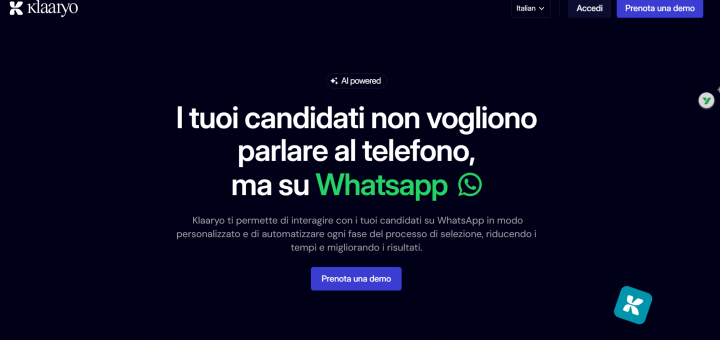
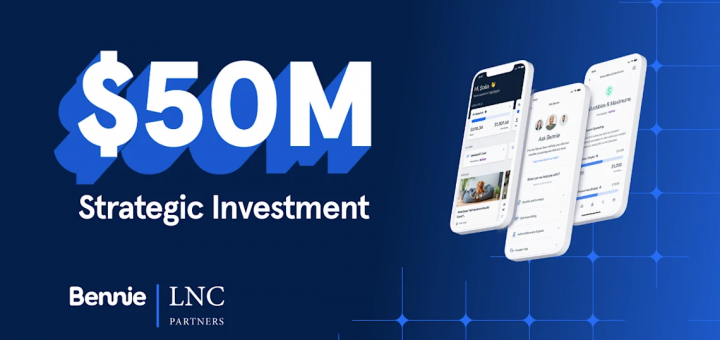
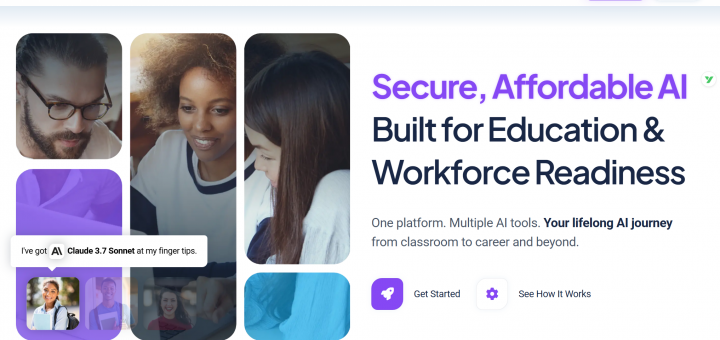


 扫一扫 加微信
hrtechchina
扫一扫 加微信
hrtechchina

